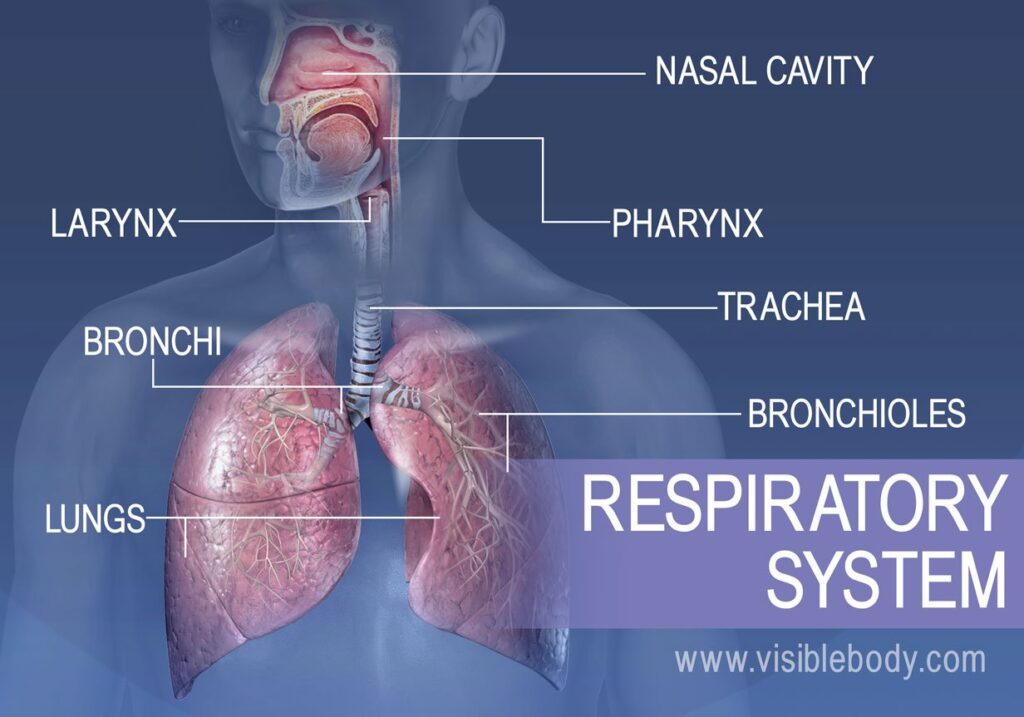The respiratory system is a complex network of organs and structures responsible for the exchange of oxygen and carbon dioxide between the body and the environment. It comprises the upper respiratory tract, including the nose, nasal cavity, pharynx, and larynx, as well as the lower respiratory tract, which consists of the trachea, bronchi, bronchioles, and lungs. The primary function of the respiratory system is to facilitate respiration, which involves the intake of oxygen from the air and the removal of carbon dioxide from the body through breathing.
Disorders affecting the respiratory system can arise from various factors, including infections, environmental exposures, allergic reactions, inflammatory conditions, structural abnormalities, and systemic diseases. These disorders can manifest in a wide range of symptoms and complications, including cough, shortness of breath, wheezing, chest pain, respiratory failure, and impaired lung function.
One common respiratory disorder is asthma, a chronic inflammatory condition characterized by airway inflammation, bronchoconstriction, and increased mucus production, leading to symptoms such as wheezing, coughing, chest tightness, and shortness of breath. Asthma exacerbations can be triggered by allergens, respiratory infections, exercise, cold air, and environmental pollutants. Management of asthma typically involves a combination of medications, including bronchodilators and anti-inflammatory drugs, as well as avoidance of triggers and patient education on proper inhaler technique and asthma self-management.
Chronic obstructive pulmonary disease (COPD) is another prevalent respiratory condition characterized by progressive airflow limitation and respiratory symptoms such as chronic cough, sputum production, and dyspnea (shortness of breath). COPD encompasses conditions such as chronic bronchitis and emphysema, often resulting from long-term exposure to tobacco smoke, air pollution, or occupational hazards. Treatment for COPD includes smoking cessation, bronchodilator medications, pulmonary rehabilitation, oxygen therapy, and in severe cases, surgical interventions such as lung volume reduction surgery or lung transplantation.
Infectious respiratory diseases, such as influenza, pneumonia, and tuberculosis, pose significant public health challenges worldwide and can range in severity from mild, self-limiting illnesses to life-threatening infections. Vaccination, good hygiene practices, and antimicrobial therapy are essential for preventing and managing these infectious respiratory diseases effectively.
Interstitial lung diseases (ILDs) encompass a group of inflammatory and fibrotic disorders affecting the lung interstitium, including conditions such as idiopathic pulmonary fibrosis (IPF), sarcoidosis, and connective tissue disease-associated ILDs. ILDs are characterized by progressive scarring and stiffening of lung tissue, leading to impaired gas exchange and respiratory symptoms such as dyspnea, cough, and reduced exercise tolerance. Management of ILDs often involves a multidisciplinary approach, including pharmacological therapies, pulmonary rehabilitation, supplemental oxygen therapy, and, in some cases, lung transplantation.
Respiratory cancers, including lung cancer, bronchial carcinoid tumors, and mesothelioma, represent a significant health burden globally and are often associated with tobacco smoking, occupational exposures, and environmental carcinogens. Early detection through screening programs and advancements in treatment modalities, such as surgery, chemotherapy, radiation therapy, targeted therapies, and immunotherapy, have improved outcomes for patients with respiratory cancers.
Overall, promoting respiratory health and preventing respiratory disorders require a comprehensive approach that includes public health initiatives, environmental controls, patient education, early detection, and effective management strategies tailored to individual patient needs. By addressing risk factors, reducing exposures, and optimizing respiratory function, it is possible to enhance overall well-being and quality of life for individuals affected by respiratory disorders.









